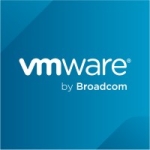What is our primary use case?
We primarily use the solution for data.
What is most valuable?
Everything about the solution is great. The admission tools, their BI tools, and data warehousing tools are all good.
The solution has been reliable. It's stable.
You can scale the product well.
The implementation process is great.
Its interface is good.
The tools are very good, efficient, and easy to work with.
What needs improvement?
I don't have any need for new features.
We'd like to see it be a bit more compatible with other solutions.
It could be faster. Right now, Oracle is a bit quicker in comparison. We'd like the solution to handle a larger amount of data faster.
For how long have I used the solution?
I've been using the solution for about five to six years.
What do I think about the stability of the solution?
The performance and reliability are good. We find it to be very stable. There are no bugs or glitches. It doesn't crash or freeze.
What do I think about the scalability of the solution?
The scalability of the product is great. It's easy to expand.
It's quite efficient in all the features that we're currently using it extensively. It's giving more and more function. et cetera.
Thousands of users currently using this product. For example, our clients are normally banks and the users are in the thousands. They normally use it each and every day.
How are customer service and support?
I've never used technical support. Mostly I will Google questions to get help. I've never had a problem so big I had to call technical support for this.
Which solution did I use previously and why did I switch?
I have used Oracle and I've used IBM Db2. I switched due to the job I had. Their new tool was SQL Server.
How was the initial setup?
The initial setup is quite straightforward. It's not overly complex or difficult. We didn't have any issues implementing it.
It's very easy to use. You just follow the simple documentation and the setup is not more than 30 minutes.
I'd rate the process a five out of five in terms of ease of implementation.
What was our ROI?
I do not track ROI. A different part of the organization might follow this.
What's my experience with pricing, setup cost, and licensing?
I'm not sure of the licensing costs of the solution.
What other advice do I have?
Our organization has a partnership with Microsoft right now.
I'd rate the solution a nine out of ten. I do find that, when it comes to comparing it to Oracle and other tools, there are some better things available on other products. Oracle, for example, manages a large set of data, so, and it is more optimized and a bit faster.
Disclosure: My company has a business relationship with this vendor other than being a customer. Partner










